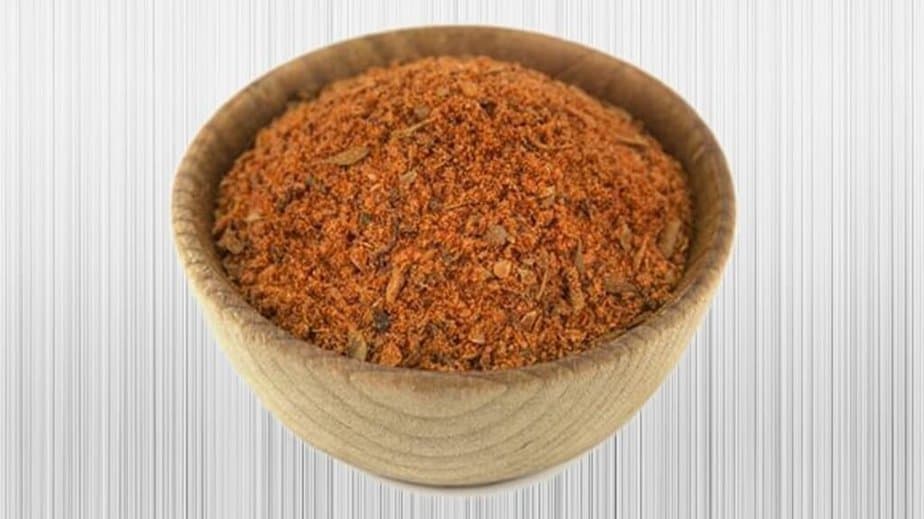Berbere is a traditional spice blend commonly used in Ethiopian and Eritrean cooking. The ingredients in this hot spicy blend can slightly vary from place to place or according to the individual preferences of the cook.
The name “berbere” in Amharic, the state language of Ethiopia, means “pepper” or “hot.” True to its name, Ethiopian dishes using this spice blend are hot and spicy.
This article explores the ingredients, recipe, uses, flavor profile, and substitutes for berbere spices.
What Is Berbere Spice Mix?
Berbere is a versatile blend of dried spices commonly used to flavor stews made with vegetables, legumes, or meat.
It’s a complex seasoning blend that has multiple uses in Ethiopian cooking. Often, it is used as a meat rub before grilling or roasting. The famous paste-like condiment awaze is made by combining berbere with oil and meat or red wine.
The origin of berbere goes back to the 5th century when Ethiopia controlled the Red Sea route to the Silk Road. The spices transported by traders from China found their way to local markets in Ethiopia. Eventually, Ethiopian villagers developed their own mix, evolving into the standard berbere spice blend of today.
What Are The Ingredients In It?
Over a dozen dry spices are used in a traditional berbere spice blend. The core ingredients are fenugreek, chili peppers, and ginger; other constituents are warm spices like allspice, cardamom, coriander, peppercorns, cumin, cinnamon, cloves, korarima, long pepper, and ajwain. According to the recipe, home cooks use customized variants of berbere spice with variations in a few of the ingredients.
Where to Buy Berbere?
Berbere is readily available in most grocery stores in the Horn of Africa, also available with online spice purveyors across the world. Possibly, you’ll find it in the international spice section of a premium supermarket in your area. If you can’t get it, either you make it your own or use a berbere substitute.
Storage
Always store the berbere spice mix in an airtight container in a dry, cool place and it has a shelf life of up to one year. Note, dry ground spices begin to gradually lose their potency after six months. For the best flavor, use the mix within six months after making it. As it gets old, it may take on a bland, woody flavor.
What Does It Taste Like?
Basically, berbere is a spicy chili blend with a complex flavor but it’s never over spicy or hot. The hot spices in this mixture are mellowed down by the citrusy, sweet flavors of other ingredients. Due to multiple ingredients, berbere does not have a standalone unique flavor. You get to feel in it a complex fragrance and flavor of different ingredients. On the whole, berbere tastes warm, spicy, earthy, and sweet.
Berbere Uses In Cooking
In Ethiopian cooking, berbere is sprinkled onto grilled fish, meat, or fruit right before serving. Usually, this spice mix is sautéed with oil and onions and used at the beginning of cooking flavorful stews and braises.
Berbere is used in making Awaze, a very spicy sauce commonly used as a dipping sauce for injera (teff bread). Also, this spice blend is used in several varieties of dishes including Doro wat (chicken stew), the national dish of Ethiopia. Besides its uses in traditional cooking, whisk berbere into a sauce, yogurt, or sour cream for a zesty dip.
Best Berbere Substitutes
If you don’t have this spice mix for immediate use, choose another spice blend that has similar ingredients as a substitute for berbere. Here are the best alternatives to consider:
1. Ras al hanout
Ras el hanout or rass el hanout is a spice mix used in varying forms in Tunisian, Moroccan, and Algerian cuisines. Ras el hanout is a good alternative to berbere for both of them contain similar ingredients such as fenugreek, chili peppers, dry ginger, peppercorns, allspice, cardamom, and coriander. The similarity in flavor and uses make them somewhat identical.
2. Garam masala
Garam masala is a blend of ground spices, originating from South Asia; a very popular spice mix in Indian cooking. You’ll find the majority of the ingredients used in garam masala are the same as in berbere. Both of them are moderately hot and spicy and they can be used interchangeably in most dishes, especially in making stews.
3. Baharat
Baharat, Arabic for “spice”, is an all-purpose spice blend widely used in Arabian or Middle Eastern cuisines. It’s a popular seasoning for meat and fish dishes, as well as stews, soups, and rice. Baharat spice mix is a close substitute for berbere as most ingredients are the same in both spice blends.
Final Thought
Berbere is a classic Ethiopian spice blend that is pleasantly hot and sweet; contains over a dozen dry ground spices like fenugreek, chili pepper, ginger, cumin, coriander, cardamom, and more. This spice is an amazing flavoring addition to stews, sauce dips, meat, fish, and a wide array of Ethiopian cuisines. The best substitutes for berbere spice mix are Ras el hanout, garam masala, and baharat spice.
Related articles:
What’s advieh spice mix and its best substitute?
Satiating Substitute For Cajun Seasoning
Greek Seasoning: Substitutes And Recipe
Jerks Seasoning: Uses And Substitutes
